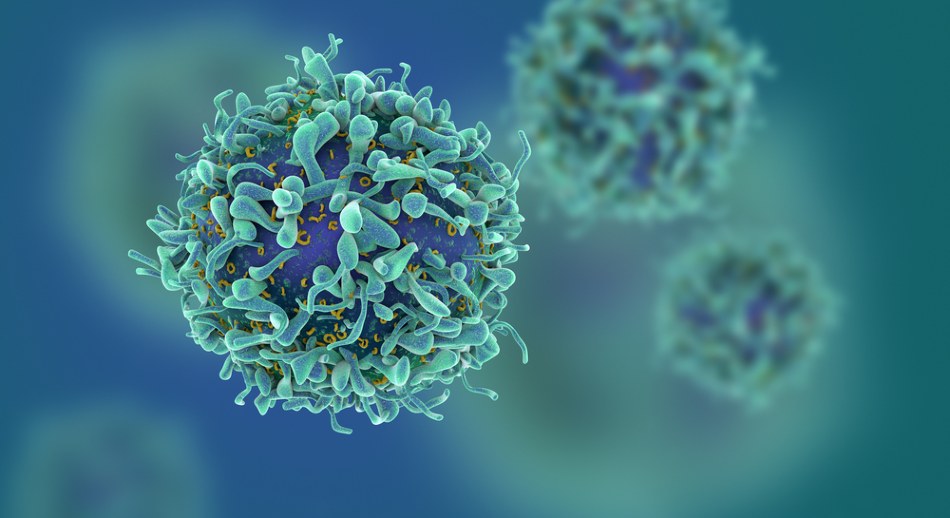
Image Credit: fusebulb/Shutterstock.com
Nanomedicine, which often encompasses nanodiagnostics and nanotherapies, has revolutionized the treatment options for individuals suffering from a myriad of diseases, particularly cancer.
An Overview of Current Cancer Treatments
One of the most widely used anticancer therapies is chemotherapy, which often includes non-specific cytotoxic agents that are associated with low therapeutic indexes and dose-limiting toxicity.
Several advances have been made over the past few decades to improve current cancer chemotherapy drugs, as well as develop novel targeted and immunotherapy agents.
In addition to these treatment options, surgery and radiotherapy are also widely used either alone or in combination with chemotherapies.
As cancer research continues to evolve and progress, various nanomedicines have also emerged.
What are Nanotherapeutics?
Many anticancer nanotherapeutics are based on the use of nanoparticles (NPs) to encapsulate poorly soluble drugs, which ultimately leads to an increase in systemic circulation times, improved biodistribution, protection of the therapeutic drugs from potential degradation by cellular components within the blood and reduced systemic toxicities.
After NPs are injected into the body, these particles are localized to their targets through passive or active strategies.
Passive targeting of NPs
The vasculature that surrounds any given tumor typically includes a blood supply and lymphatic drainage system, both of which allow for cancer cells to continue to grow and proliferate throughout the body. This ultimately leads to the metastasis of cancer cells.
The tumor vasculature is a highly complex environment comprised of excessive branching, chaotic structures, enlarged gaps between the endothelial cells that line blood vessel walls, and disrupted basement membranes.
Passive targeting occurs when NPs, which do not have any specified affinity to disease target sites, accumulate in certain areas of the body, typically beginning with the vascular structures that surround tumors. The ability of NPs to accumulate within tumors is often determined by their inherent physicochemical properties, which can include the shape, size, charge or flexibility of the NPs.
Once NPs penetrate the vascular wall of the tumor vasculature, extravasation of the particles from the blood vessels occurs, allowing their diffusion into extravascular tissues.
Active targeting of NPs
Compared to passive targeting strategies, active targeting of NPs involves the use of NPs that have been designed to have a binding affinity for specific antigens present on the surface of cancer cells.
These antigens can include antibodies, proteins, nucleic acid ligands and small molecule ligands, many of which are often overexpressed in diseased tissues.
In addition to following passive targeting strategies, active targeting NPs also accumulate within or undergo endocytosis to directly enter cancer cells and elicit their cytotoxic effects.
Katie Whitehead: Nanotherapeutics: Improving Cancer Cell Treatment
Video Credit: College of Engineering, Carnegie Mellon University/YouTube.com
Traditional Cancer Diagnostic Techniques
The five most common cancers that result in death for affected individuals around the world include lung, liver, colorectal, stomach and breast.
The diagnosis of these cancers is typically achieved through computed tomography (CT), magnetic resonance imaging (MRI), positron emission computer tomography (PET), color Doppler ultrasound imaging (CDI) and biochemical indicators.
Despite their widespread use, many of these diagnostic techniques are associated with limited sensitivity and accuracy, particularly when used to diagnose the early stages of cancer progression.
Since the early diagnosis of any given cancer is one of the most significant determining factors of patient survival, it is crucial for highly accurate diagnostic measures to be employed.
Click here to find out more about nanoparticle production systems
Nanodiagnostics in Common Cancer Diagnosis
Several different strategies have been developed to utilize the specificity of NPs to achieve early diagnosis of common cancers. These include the detection of biomarkers, which are substances often produced either directly from tumor cells or induced by tumor cells and produced by non-tumor cells.
These cancer biomarkers can be detected through various mechanisms, including nanoprobes, biosensors, microarrays and quantum dot enhancing techniques. Nanoprobes are optical devices that identify microscopic substances or measure physical parameters that indicate the presence of potentially cancerous cells.
In addition to using NPs independently from traditional imaging techniques, many advancements in this field have also incorporated NPs into conventional diagnostic methods. For example, while MRIs are unable to image at the molecular or cellular level, this imaging modality is a powerful instrument for various cancer diagnoses, particularly liver cancer.
To enhance the sensitivity of an MRI for this purpose, magnetic NPs, particularly iron-oxide NPs, have been used to target glycosaminoglycan, which is often present in hepatocellular liver carcinoma cells. Similarly, multifunctional fluorescent magnetic nanoparticles identify lung cancer stem cells and allow tumor xenograft imaging, which generally could not be achieved by a traditional MRI.
The Future of Nanotechnology in Cancer Treatment
Overall, significant advancements have been made to ensure the safety, reliability and accuracy of nanotherapeutic and nanodiagnostic technologies used in the treatment of cancers.
Many of these nanotechnologies have undergone rigorous clinical testing by federal health agencies, such as the Food and Drug Administration (FDA) in the United States, and are now approved for use in patients.
Since many cancers are associated with high mortality rates, nanotechnologies offer a promising future for the treatment and, hopefully, the permanent elimination of these diseases.

 Read more: What are the challenges in cancer nanotechnology?
Read more: What are the challenges in cancer nanotechnology?
References and Further Reading
Yongbing, S., Wen, M., Yuanyuan,. Y., et al. (2019) Cancer nanotechnology: Enhancing tumor cell response to chemotherapy for hepatocellular carcinoma therapy. Asian Journal of Pharmaceutical Sciences 14(6); 581-594. doi:10.1016/j.ajps.2019.04.005.
Foster, C., Watson, A., Kaplinsky, J., & Kamaly, N. (2017) Improved Targeting of Cancers with Nanotherapeutics. Methods of Molecular Biology; 13-37. doi:10.1007/978-1-4939-6646-2_2.
Leng, F., Liu, F., Wu, Y., & Tian, W. (2018) Strategies on Nanodiagnostics and Nanotherapies of the Three Common Cancers. Nanomaterials 8(4). doi:10.3390/nano8040202.
Disclaimer: The views expressed here are those of the author expressed in their private capacity and do not necessarily represent the views of AZoM.com Limited T/A AZoNetwork the owner and operator of this website. This disclaimer forms part of the Terms and conditions of use of this website.